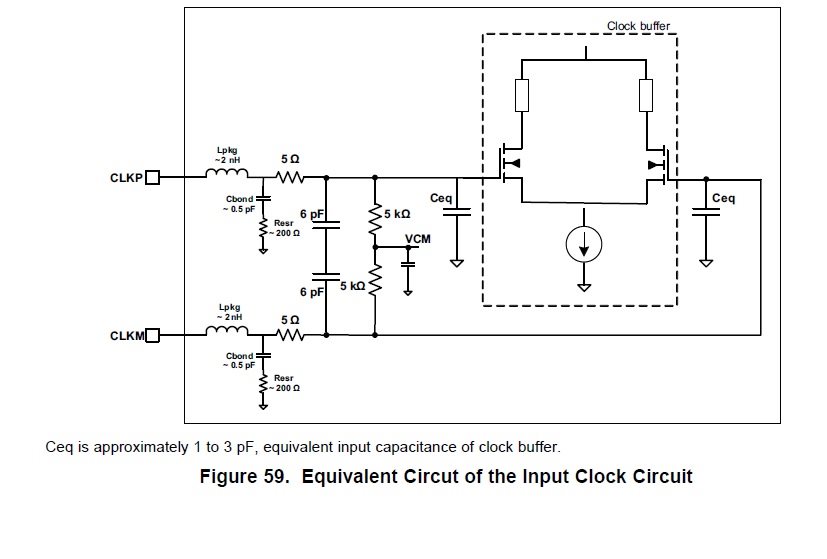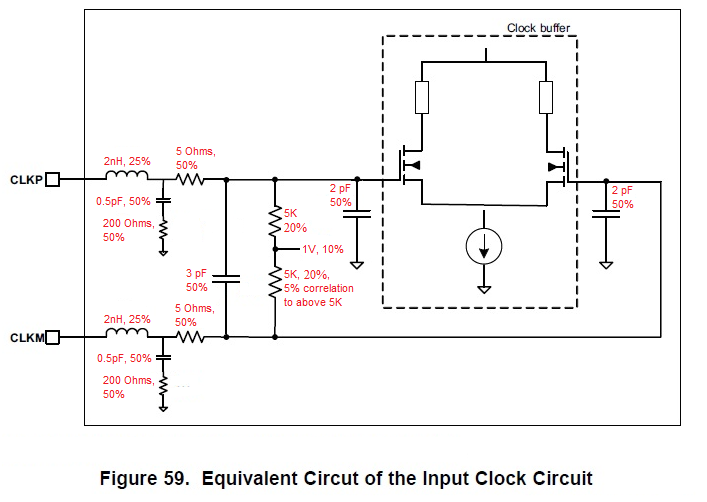Can you please tell me the differential and common-mode input capacitances and their tolerance for the AFE5808A ADC clock? I have a long string of these parts driven by a sine wave clock, and it appears that these capacitances are much larger than what I expected from a bipolar comparator (e.g. 1 pF), perhaps due to the use of MOS instead, and so the net transfer function is off from my prediction. I should be able to correct for this though if I had a better understanding of the ADC clock input loading.
Thanks,
Roger Dixon




